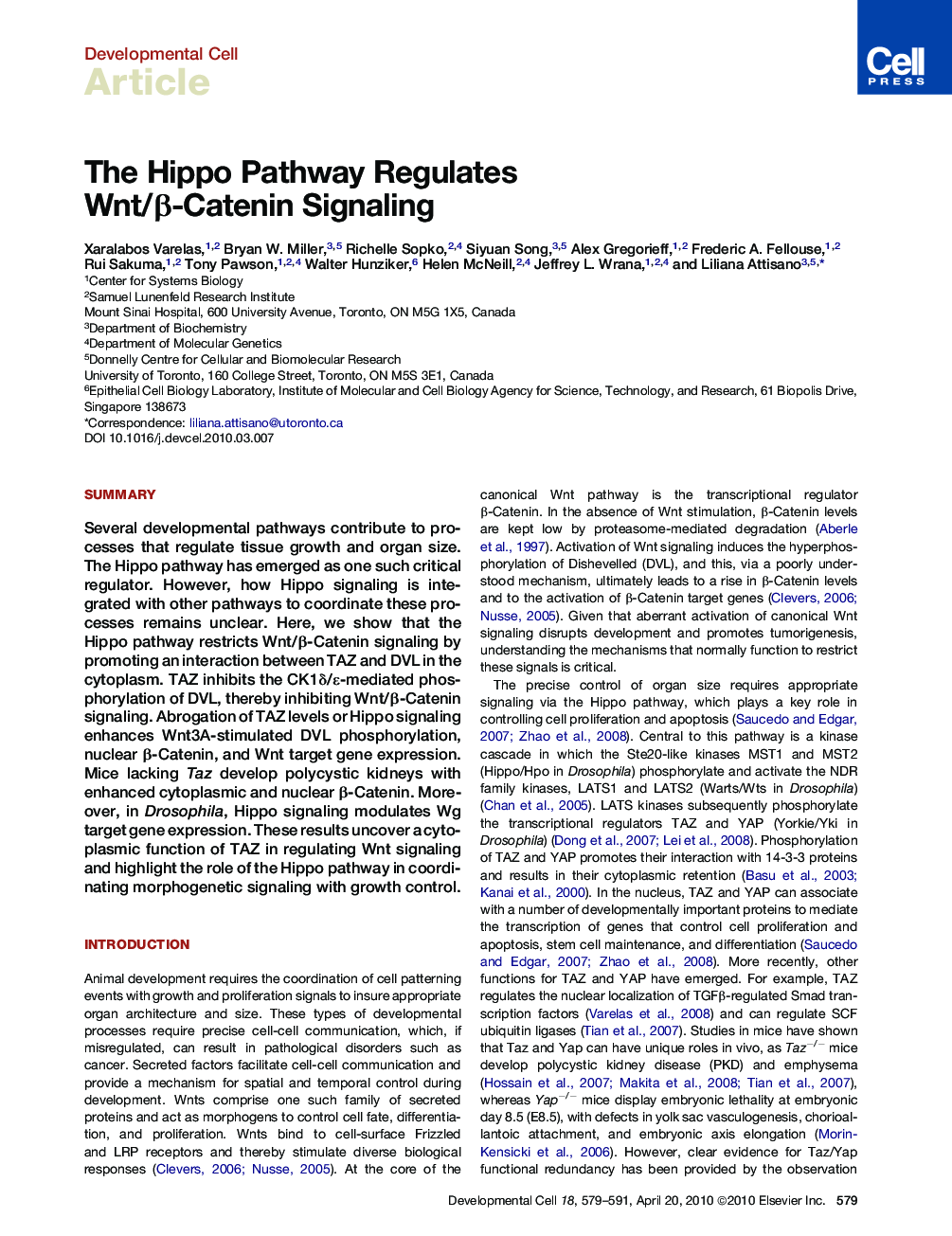| Article ID | Journal | Published Year | Pages | File Type |
|---|---|---|---|---|
| 2177217 | Developmental Cell | 2010 | 13 Pages |
SummarySeveral developmental pathways contribute to processes that regulate tissue growth and organ size. The Hippo pathway has emerged as one such critical regulator. However, how Hippo signaling is integrated with other pathways to coordinate these processes remains unclear. Here, we show that the Hippo pathway restricts Wnt/β-Catenin signaling by promoting an interaction between TAZ and DVL in the cytoplasm. TAZ inhibits the CK1δ/ɛ-mediated phosphorylation of DVL, thereby inhibiting Wnt/β-Catenin signaling. Abrogation of TAZ levels or Hippo signaling enhances Wnt3A-stimulated DVL phosphorylation, nuclear β-Catenin, and Wnt target gene expression. Mice lacking Taz develop polycystic kidneys with enhanced cytoplasmic and nuclear β-Catenin. Moreover, in Drosophila, Hippo signaling modulates Wg target gene expression. These results uncover a cytoplasmic function of TAZ in regulating Wnt signaling and highlight the role of the Hippo pathway in coordinating morphogenetic signaling with growth control.
Graphical AbstractFigure optionsDownload full-size imageDownload high-quality image (172 K)Download as PowerPoint slideHighlights► This work identifies a cytoplasmic role for the transcriptional coactivator TAZ ► TAZ, a Hippo pathway mediator, binds Dishevelled and inhibits Wnt signaling ► β-catenin is mislocalized in polycystic kidneys of TAZ null mice ► Disrupting the Hippo pathway in cell lines and flies modulates Wnt signaling
